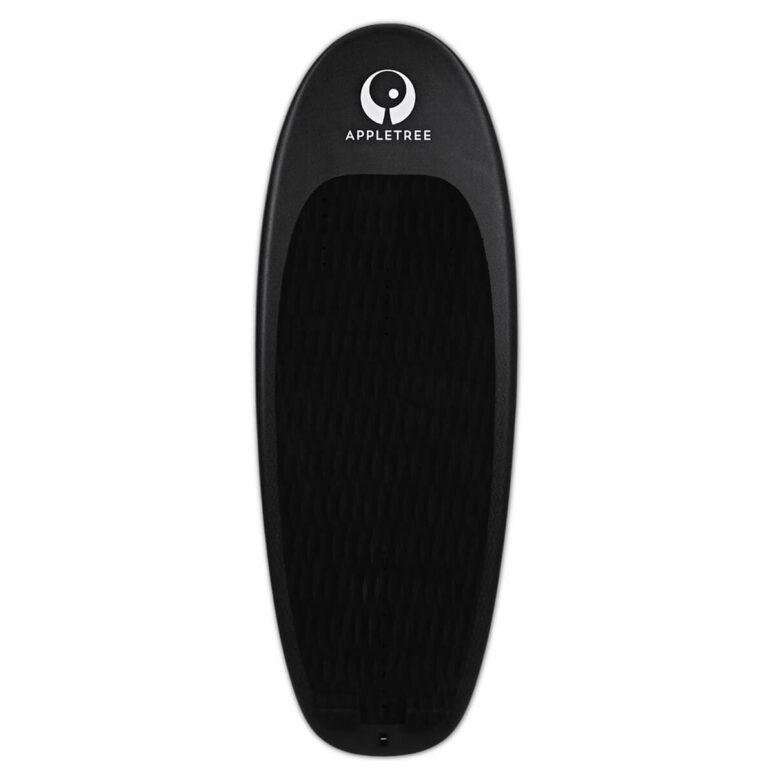

When you purchase gear through links on our site, we may earn a small commission. Here’s why you can trust our tests and our affiliate partner.

The Appletree Skipper concept transcends all foiling disciplines across their board range; in this instance we get to grips with the Apple Skipper Short, available in two stock sizes 3’4 and 3’10. The lightest and lowest volume board in the Skipper series, it’s aimed as a minimal pocket board for kite, wake, tow and pump foiling. The 3’10” we tested comes in at a skinny 18.4l. Designed like a dam busters style bouncing bomb, or perhaps even a skimming stone, the Skipper has a pronounced bulge that sits a little lower than the foil box and naturally bounces when it hits water to seriously aid recovery on harsher touch downs, but as a bonus also feels like a natural position to place volume when taking off from the water to aid that all important front foot stability. The tail fades out to an efficient teardrop style point, and the board is generally narrow, at 16.5” at its widest point.
It’s clear from a glance at the bare carbon that a lot of reinforcement has taken place around the foil box area. A vacuum infused carbon layup fuses the waterproof closed cell foam to the laminate extremely solidly with a minimum of epoxy used, minimizing weight. Inserts are present in a Y configuration. The EVA deck pad has a relatively smooth texture and offers a decent level of grip but also allows a little wiggle room for adjusting foot placement, important for a board of miniscule dimensions and almost no swing weight, which will feel sensitive underfoot. Even on this tiny board, Appletree have installed their proprietary longer foil box to allow a massive range of foils to be used, even those that like to sit extremely far forward in the box. As with anything from Appletree, customs sizes, colors and tail dip designs are available to specify from the factory as everything is built to order in their Portuguese factory.
We tested the Skipper Short kite foiling, where it absolutely shines amongst its peers. The volume there is just enough not to hamper a lightwind board start, and its bullet-like shape offers almost no flat surface to the wind, which it pierces like a proverbial bullet. The innate feeling of connectedness to the foil offers a ridiculous amount of control and sensitivity.
Behind a boat, the precise feeling carries over beautifully, but you get an insight into how the stiffness translates into extended pumping ability, where we could navigate between wakes and gave us an opportunity to play the classic how-far-can-you-pump game. We were lapping the boat with ease with the tiny swing weight and ultra-stiff foil box. The volume was easy enough to sink on board start, and the board naturally wanted to climb to the surface and face the right direction. Whipping into some smaller summer waves in the UK, the narrowness lets you crank some decent turns over without any risk of catching a rail. With such high levels of feedback through the board, whilst of course it would function perfectly with an aluminum mast, it would be a bit of a crime to use this with anything but some decent carbon underneath to get full benefit and energy transfer.
The Skipper Short takes the Skipper concept to the tiniest level, where it performs fabulously; the exceptionally stiff and light board makes for an extremely connected feeling to the foil, with a huge amount of feedback, and the shape can be thrown into all sorts of scenarios and has the best chance of bouncing out rather than tanking. As a kite foil board it feels electric, and as a wake or pump board, its innate stiffness translates every drop of energy you produce into thrust, wasting nothing.